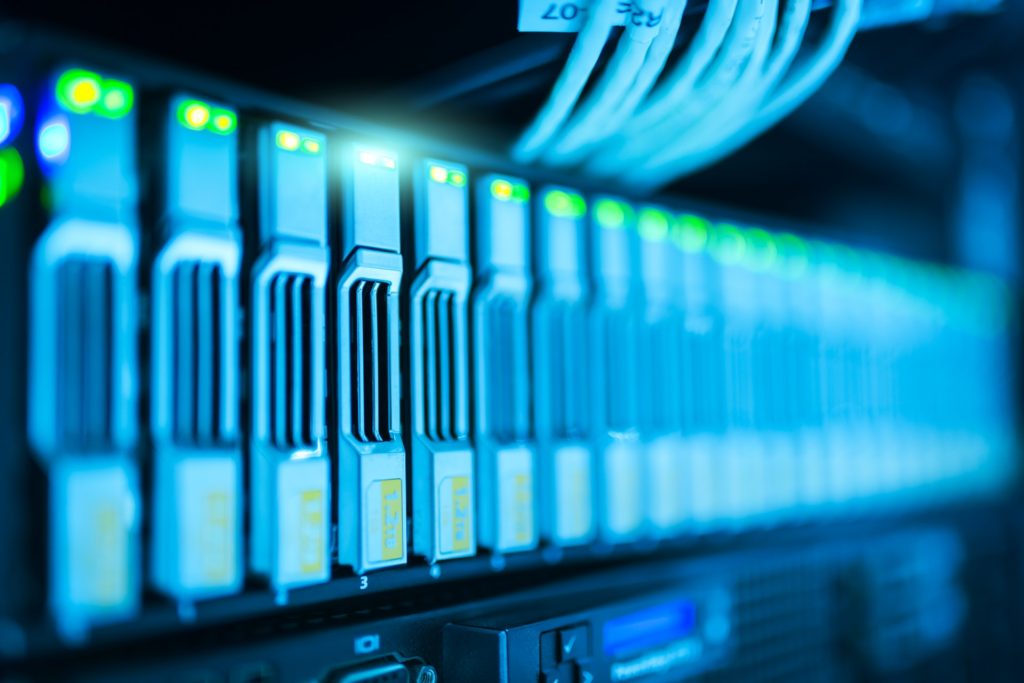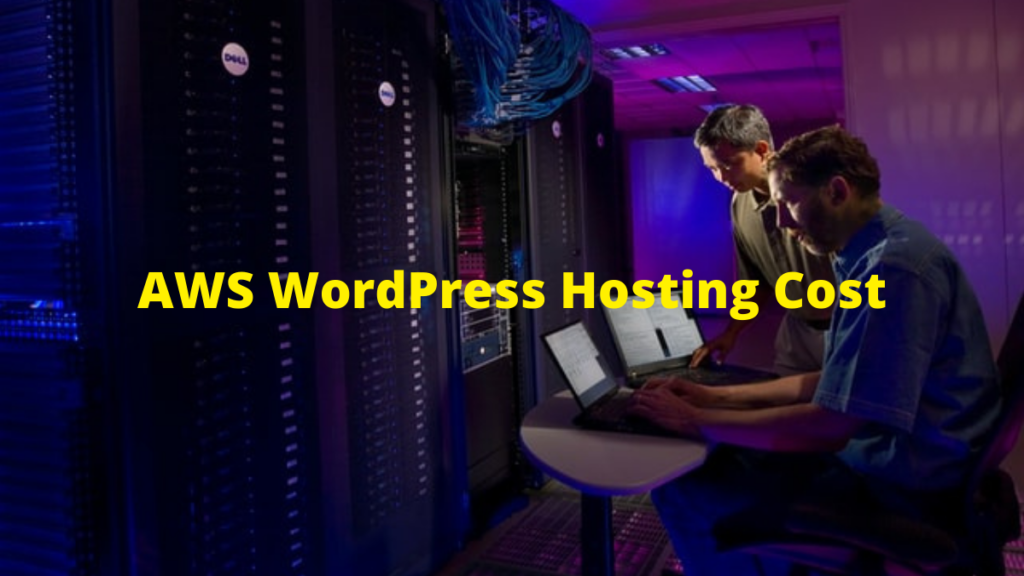Amazon Elastic Compute Cloud (Amazon EC2) is a cloud computation facility that offers reliable, scalable figure resources.
It is meant to make web-scale cloud calculation more available to programmers. The modest net service interface of Amazon EC2 enables you to quickly receive and customize power.
Also, you need low-cost hosting that will allow you to get up and running as quickly as possible while not breaking the bank.
For this, Amazon WordPress hosting cost is perfect. The way you pay for utilities like water and power is close to how you pay for Amazon EC2 Pricing.
You just simply need to pay for the programs you use, and there are no hidden charges or termination payments if you quit using them.
Amazon EC2 instance families
Savings Plans are a supple valuing mechanism that offers affordable premiums on EC2, Lambda, and Faregate in return for a one- or three-year promise to a reliable quantity of consumption (measured in $/hour).
You will be paid the reduced Savings Plan price for your use up to the end of your contract anytime you sign up for a Savings Plan.
Amazon EC2 instances come with a variety of extra characteristics that make it easier to install, handle, and scale the apps.
- Mac instances: These are motorized by Apple Mac small processers and are based on the AWS Nitro System. Developers may use this EC2 family to use macOS and advance, build, trial, and mark submissions that need the XCode IDE.
- T4g instances: For an extensive range of burstable general-purpose assignments, Amazon EC2 T4g instances are operated by Arm-based AWS Graviton2 computers and offer up to 40% better worth efficiency than T3 instances.
- Amazon EC2 M6g: Arm-based AWS Graviton2 processors power Amazon EC2 M6g instances. They provide an equilibrium of calculate, memory, and interacting services for a wide range of loads and deliver up to 40% improved price than present generation M5 instances.
Read more at: https://aws.amazon.com/ec2/instance-types/
Amazon EC2 Reserved Instances
To add on, enforcement and eliminating “noisy neighbors” that use more than their equal share of mutual services are two benefits of dedicated instances.
The most disadvantage of dedicated instances is that they are more expensive; you need to pay by the hour rather than by the second, and when every dedicated instance is running, you must pay an extra cost of (currently) $2.00 per hour per field.
When used in a particular Availability Zone, Amazon EC2 Reserved Instances (RI) deliver a substantial reduction (up to 72%) over On-Demand rates and have a space reservation.
EC2 RIs offer a subsidized hourly rate and the right to reserve space for EC2 instances.
When the qualities of EC2 instance consumption match the characteristics of an active RI, AWS Billing automatically applies the RI’s discounted rate.
You may select the sort of RI that better suits your application’s needs with RIs. Also, you can reserve space for your Amazon EC2 instances in a certain Availability Zone for any length of time with Capacity Reservations.
This can also offer you the freedom to add power reservations on a case-by-case basis while also receiving Regional RI discounts.
- Standard RIs: These deliver the biggest savings (up to 72 percent off On-Demand) and are ideally fit for long-term use.
- Convertible RIs: This offers a discount (up to 54 percent off On-Demand) and the right to adjust the RI’s qualities if the conversation generates Reserved Instances of equal or larger price.
- Scheduled RIs: This can be launched within the time frames you specify.
Read more at: https://aws.amazon.com/ec2/pricing/reserved-instances/
How does Amazon EC2 Pricing Works?
You could find absorbing too much detail a little daunting after looking at the Amazon EC2 pricing list.
The pricing for Amazon EC2 is clear and predictable: you pay a per-second fee for each second you need, with a one-minute minimum.
It costs the same to operate a 10-node cluster for 10 hours as it does to run a 100-node cluster for 1 hour.
Is Amazon EC2 Really Free?
Amazon EC2 is also available for free trial. Using only EC2 Micro instances to remain inside the Free Tier.
The free tier extends to a limited number of AWS offerings and is limited to a monthly consumption cap.
Read more at: https://aws.amazon.com/ec2/pricing/
Amazon EC2 Pricing
Subscribing to the AWS CloudWatch program will save you money if you want to monitor the use and success of your instances to save money.
AWS EC2 pricing is affected by a variety of factors. The cost can vary depending on the country, operating system, instance family, rent, off-peak use, and whether you commit to a reserved level of usage.
Pricing for EC2 will now seem to be simple.
Amazon EC2 Pricing Models
You could be in for a costly lesson if you start deploying EC2 instances without first knowing about AWS EC2 pricing.
EC2 instances will currently be distributed in over 20 different countries, on more than ten different operating systems, with a variation of instance family (or category), and whether to install the EC2 instances on a shared tenancy server or on a dedicated host.
For all these options, there are over 350 EC2 instance forms to choose from, each optimized for a specific use case.
Reserved Instances, On-Demand Instances, Spot Instances, and Dedicated Hosts are the four payment types for Amazon EC2 instances.
The Secret Email System eBook
The eBook where you learn the whole Secret Email System.
EC2 Instance Types Pricing
Below are some of the examples of EC2 Instance Types Pricing. It will help you get idea of how these instances are classified.
AWS provides a variety of EC2 instance types that are tailored for specific purposes. It’s awesome that they have so much variety, but it does mean that you’ll have to learn yet another thing.
Keep in mind that you’ll always need to select the AWS instance sizes that best fit your needs within each form.
Older generations of each instance type are still available for purchase – for example, c5 is the most recent “c” instance, but c4 and c3 are still available – but since the newer types work better at a lower price, you can only choose the older types if you have an AMI or other dependence.
For certain people, the variations are important, but you probably still know who you are.
Read more at: https://aws.amazon.com/ec2/pricing/on-demand/
Amazon EC2 Pricing Explained
With Amazon EC2, you can get and customize power in minutes. You can run one, hundreds, or thousands of server instances at the same time.
Operating structures, clock periods of server time, Pricing Model, Instance kind, and Number of instances are some of the factors to remember when calculating Amazon EC2 costs.
EC2 Instance On-Demand Pricing
This model needs no upfront payments and allows you to pay for computing resources per hour or per second (only for Linux Instances) depending on the instances you select.
You can scale up or down your computing resources to suit your application’s needs, and you only wage for the instances you need.
This model is appropriate for emerging/challenging applications with variable or short-term loads.
EC2 Reserved Instances Pricing
As opposed to On-Demand Instance pricing, Amazon EC2 Reserved Instances will save you up to 75%.
When used in a particular Availability Location, it also offers space reservation.
Reserved Instances can save money for applications with stable workloads as related to On-Demand Instances.
EC2 Spot Instances Pricing
Amazon EC2 Spot Instances are unused EC2 instances in the Amazon Web Services cloud. As opposed to On-Demand rates, Spot Instances offer up to a 90% discount.
The price of Amazon EC2 spot Instances changes on a regular basis due to supply and demand. It has charging systems for per hour and per second (only for Linux Instances).
Then there is the question of how the instances can be used until you have decided on the best alternative. Spot Instance pricing is available if you are using them to run applications with variable start and end times.
On-demand AWS EC2 pricing could be a safer choice if the instances will be used for designing and analyzing, or for running applications with volatile workloads.
Reserved Instances and/or Savings Plans, on the other hand, could dramatically decrease costs if the instances running are more predictable and run for longer periods of time.
AWS EC2 Pricing Calculator
Using the AWS Pricing Calculator, you can predict your monthly bill if you are running a single instance or hundreds of individual providers.
You may use the calculator to approximate individual or multiple costs, as well as to test complete solutions using models. With AWS goods and services, you can build a cost estimate that suits your company or personal needs.
AWS Simple Monthly Calculator
The AWS Simple Monthly Calculator is a simple online application that lets you predict the monthly cost of AWS services depending on your planned use.
The AWS Simple Monthly Calculator is revised on a regular basis to represent the most recent pricing for all AWS offerings in all regions.
Read more at: https://calculator.s3.amazonaws.com/index.html
Right Amazon EC2 Instance
Today, Amazon EC2 helps you to select from ten different instance forms scattered over six different instance families.
M3 instances are the most recent generation of general-purpose instances, and they deliver a greater number of virtual CPUs (vCPUs) for better performance.
If you need general-purpose instances with heavy Processor demands, M3 instances are the way to go. M1 instances are the initial general-purpose instances that are the most cost-effective way to execute the programs.
If you want smaller instance sizes, moderate CPU performance, and a lower total price, M1 instances are a fantastic choice.
Amazon EC2 Cost Breakdown
If you have access to your organization’s billing management and are logging into the AWS console, you will see a high-level cost rundown of each AWS commodity, like EC2.
In this EC2 product section, you will see your spending organized by AWS area, with sub-categories within each region.
This high-level view can be helpful in some circumstances, but it lacks specifics such as availability region, tag breakdown, and which instance used a reservation.
Due to this, it is vital to evaluate EC2 consumption and it spend breakdown by different dimensions including resource, instance sort, utilities, states, and more, while also understanding and maximize AWS costs.
The gross monthly cost is the amount of the consecutively utilities and information transmission out costs, minus the AWS Free Tier discount.
Read more at: https://docs.aws.amazon.com/whitepapers/latest/how-aws-pricing-works/amazon-ec2-cost-breakdown.html
The Secret Email System eBook
The eBook where you learn the whole Secret Email System.
Hidden AWS EC2 Costs
- Unused Instances: Unused or underutilized EC2 instances are one of the most important triggers of high AWS bills, since they require the business to pay for services it is not using. Be sure to end both instances as soon as you are through with them; keep in mind that this extends to each world area separately.
- Unneeded Orphaned Snapshots: It is not enough to simply shut down an unused or underutilized EC2 case. Your snapshots will stay saved on Amazon Simple Storage Service (S3), and you will continue to be paid monthly for them, even if the attached EBS volumes are immediately removed along with the case.
- Unattached/Unused EBS Volumes: Except for root volumes, it is a smart idea to uninstall EBS volumes that are not connected to EC2 instances. These unattached volumes not only increase your AWS bill whether they are used, but they also pose a cyber security danger to any sensitive data stored on them.
- Data Transfer Costs: Transferring data into EC2 is usually – but not always – free, but transferring data out is always an expense. The amount you will be paying is determined by the amount of data being transmitted and where it is going, and costs differ by region.
AWS and other cloud technologies often come with a slew of hidden costs in the form of performance, stability, and cyber security issues.
The latest data breaches at Verizon’s corporate partners, the Republican National Committee, and private security company TigerSwan were caused by misconfigured AWS servers.
Do not feel obligated to pay AWS or another cloud service indefinitely. If you cannot seem to get your AWS bill down to a sustainable amount, try buying your own supplies.



